Low Carb Keto No Noodle Lasagna Recipe for Tonight’s Dinner
Low-carb keto no-noodle lasagna transforms traditional comfort food into a guilt-free culinary adventure.
Classic Italian-inspired layers become magnificently reimagined without pasta’s heavy carbohydrate burden.
Hearty and satisfying, this innovative dish delivers robust flavors that dance across your palate.
Innovative home cooks appreciate meals that feel indulgent while supporting nutritional goals.
Creamy cheese and savory proteins create a harmonious blend that mimics classic lasagna’s beloved texture.
Nutritional strategies can taste surprisingly delectable when crafted with creativity and passion.
Meal planning just got significantly more exciting for health-conscious food enthusiasts: dive in and savor every delicious bite.
Why No Noodle Lasagna Still Tastes Like the Real Thing
Everything You’ll Need for Layered Goodness
Meat:Cheese Layer:Seasoning and Sauce:Lasagna Instructions Without the Pasta Hassle
Step 1: Prepare The Oven
Set the oven to a toasty 180°C (350°F) and let it warm up while you get everything ready.
Step 2: Sizzle The Ground Beef
In a large skillet over medium heat, cook the ground beef with these seasonings:Break up the meat with a wooden spoon until it turns a rich brown color. Drain away any extra fat to keep things light.
Step 3: Create Delicious Layers
Grab a 23x23cm (9×9 inch) baking dish and start building your lasagna masterpiece:Step 4: Bake To Perfection
Slide the dish into the preheated oven and let it bake for 25 minutes. Watch for the cheese to melt and turn a gorgeous golden brown on top. The lasagna is ready when it looks bubbling and irresistible.
Step 5: Rest And Serve
Let the lasagna cool for a few minutes after removing from the oven. This helps the layers set and makes cutting easier. Serve hot and enjoy your low carb keto feast!
Tips for Firm Layers and Rich Flavor
How to Store No-Noodle Lasagna for Later
Creative Lasagna Variants to Explore
Your Low-Carb Lasagna Wrap-Up
Keto lasagna emerges as protein-packed culinary magic without traditional pasta constraints.
Cheese layers meld with rich marinara sauce, creating Mediterranean-inspired comfort.
Mediterranean kitchens would applaud this clever carbohydrate-conscious twist on classic recipes.
Nutritional profiles shine through carefully selected ingredients, promising maximum flavor with minimal net carbs.
Home chefs can master this simple yet elegant dish with minimal preparation time.
Passionate recipe explorers: share this protein-powered masterpiece across social platforms, spark conversations with fellow wellness enthusiasts, and spread low-carb love through delicious innovation.
Print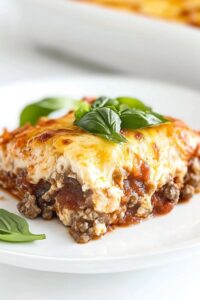
Low Carb Keto No Noodle Lasagna Recipe
- Total Time: 35 minutes
- Yield: 6 1x
Description
Keto No Noodle Lasagna delivers Italian comfort without carb guilt, replacing traditional pasta with zucchini layers. Savory ground beef, rich ricotta, and melted cheese create a hearty, guilt-free feast you’ll crave again and again.
Ingredients
Main Protein:
- 450 grams / 1 pound ground beef
Cheeses:
- 340 grams / 1 ½ cups ricotta cheese
- 50 grams / ½ cup grated Parmesan cheese
- 225 grams / 8 ounces mozzarella cheese (sliced)
Seasonings and Sauce:
- 1/8 teaspoon sea salt
- 1 dash black pepper
- 600 milliliters / 2 ½ cups marinara sauce
Instructions
- Preheat the oven to a moderate temperature of 180°C (350°F), ensuring the rack is positioned in the center for even heat distribution.
- Place a large skillet over medium heat and allow it to warm up for approximately 1-2 minutes. Carefully add the ground beef, breaking it into small, uniform crumbles using a wooden spoon or spatula.
- Season the beef with salt and black pepper, stirring occasionally to ensure even cooking and browning. Cook for 6-8 minutes until the meat loses its pink color and develops a rich, caramelized exterior.
- Drain excess fat from the skillet using a colander or by carefully tilting the pan, preventing greasy residue from remaining in the dish.
- Select a 23×23 centimeter (9×9 inch) baking dish and create the first layer by evenly spreading the cooked ground beef across the bottom, creating a consistent base.
- Gently spread the ricotta cheese over the beef layer, using the back of a spoon to create a smooth, even surface that covers the entire meat layer.
- Sprinkle the Parmesan cheese generously and uniformly over the ricotta, adding depth of flavor and a subtle nutty essence to the lasagna.
- Carefully pour the marinara sauce over the cheese layers, ensuring complete coverage and allowing the sauce to seep between the ingredients.
- Complete the lasagna by arranging mozzarella cheese slices across the top, creating a beautiful, melty golden-brown crust during baking.
- Transfer the prepared lasagna to the preheated oven and bake for 25 minutes, watching for the cheese to become perfectly melted and develop a light golden color.
Notes
- Rest the lasagna for 5-10 minutes to help layers settle and make cutting smoother.
- Shield the top with foil if cheese browns too fast during baking.
- Distribute ricotta smoothly across layers to guarantee consistent creaminess in each bite.
- Select a robust marinara sauce with thick consistency to maintain structural integrity of the dish.
- Carefully eliminate excess grease from cooked beef to prevent a soggy, oily lasagna.
- Prep Time: 10 minutes
- Cook Time: 25 minutes
- Category: Dinner
- Method: Baking
- Cuisine: Italian
Nutrition
- Serving Size: 6
- Calories: 307
- Sugar: 2g
- Sodium: 200mg
- Fat: 27g
- Saturated Fat: 10g
- Carbohydrates: 8g
- Fiber: 4g
- Protein: 12g
- Cholesterol: 125mg
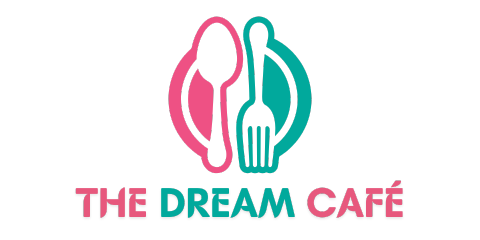
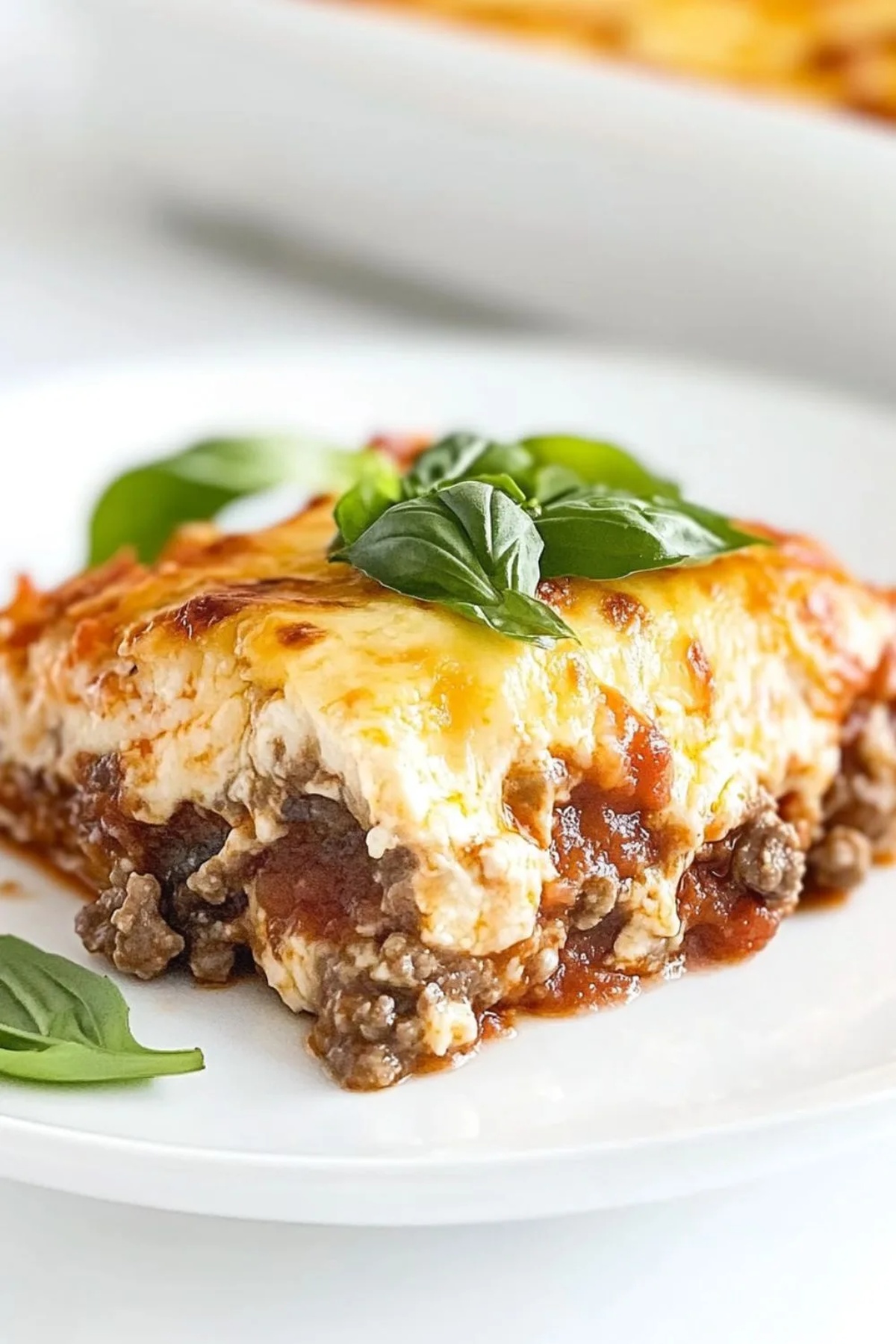
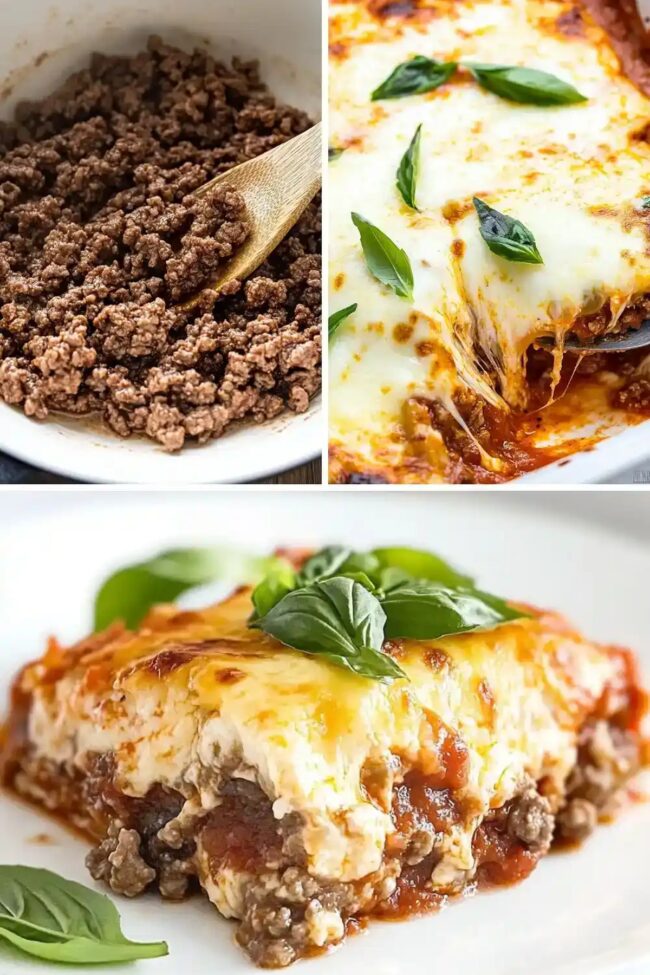
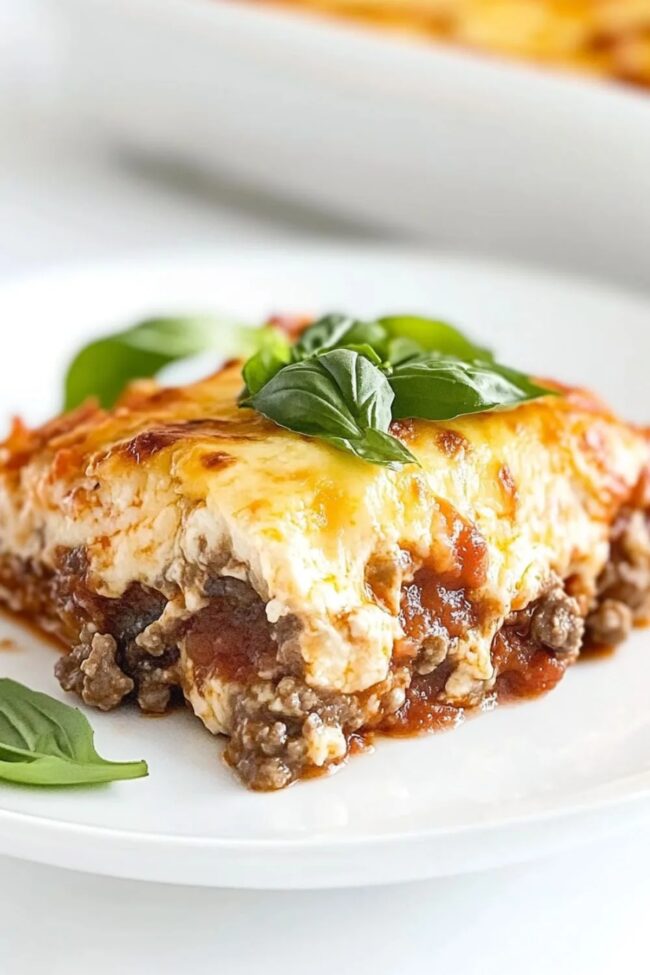
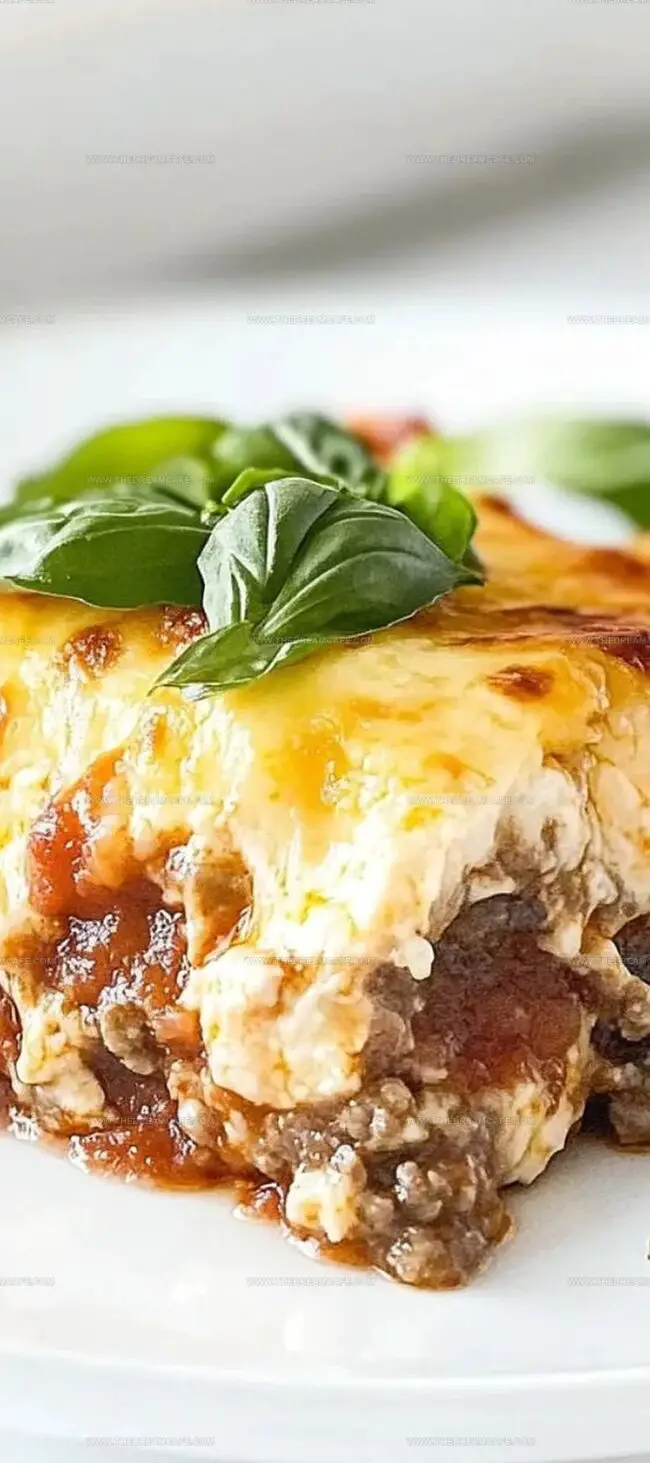
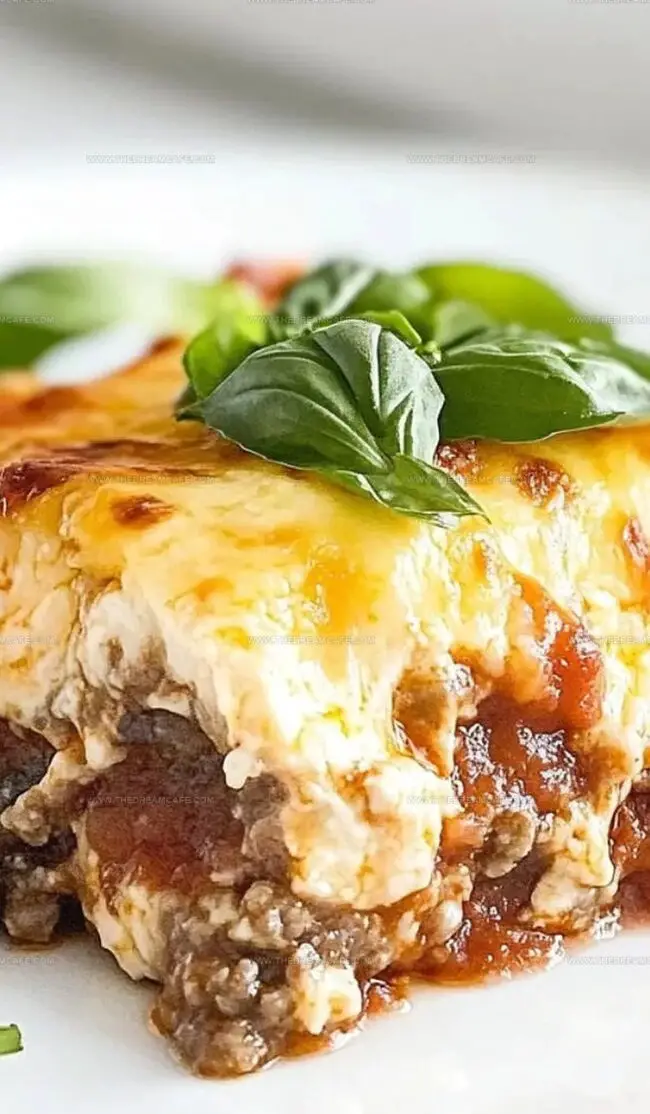
Julian Park
Co-Founder, Cuisine Researcher & Food Culture Writer
Expertise
Education
The Institute of Culinary Education (ICE), Los Angeles, CA
Julian Park is a natural storyteller at The Dream Café who blends hands-on culinary experience with a passion for exploring global food traditions. A graduate of The Institute of Culinary Education in Los Angeles, Julian combines professional technique with a love for cultural discovery, diving into how dishes reflect heritage, migration, and identity.
His work spans everything from in-depth cuisine guides to reflections on everyday meals around the world. With a curious palate and a journal always close by, Julian helps readers connect with food in a way that feels so insightful and personal.